A guide to micronutrients and how wild herbs ensure your survival in an emergency situation
You need micronutrients for long-term survival. In this guide, you will understand how important it is to intake enough micronutrients.
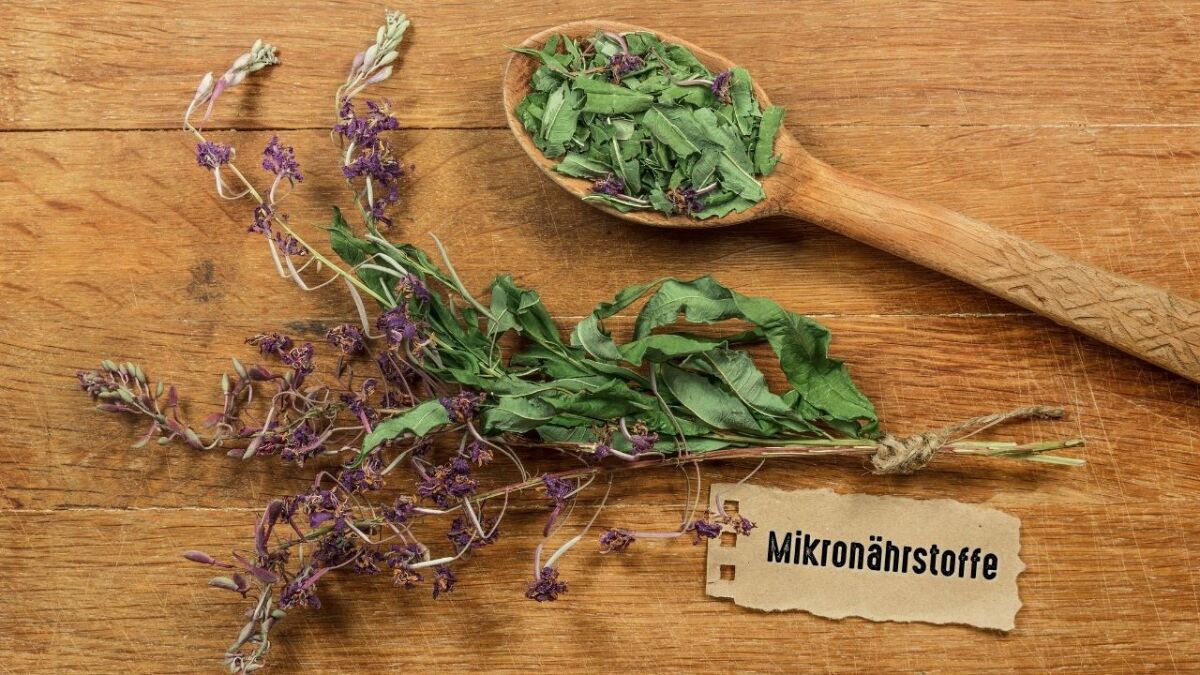

From Martin Gebhardt. Check out my “About me” page.
👉 The key facts from this guide
- Wild herbs are edible and provide you with important micronutrients.
- Micronutrients such as vitamins and minerals are essential for metabolic processes and the immune system.
- Nettle, ground elder, chickweed, and comfy are some wild herbs that are rich in micronutrients.
- Wild herbs are more nutrient-rich than conventional vegetables and available all year round.
- Knowledge about wild herbs and their nutrients helps you to be balanced, supplied in survival situations.
- Invest in your knowledge about wild herbs and use nature for a healthy diet.
When we face an emergency, we often forget the basics that can keep us alive.
This is where wild herbs come into play.
They may not look very edible, but most of them are.
And they are also extremely healthy, providing important micronutrients.
This guide helps you understand what micronutrients are.
It explains why they are essential for survival and how wild herbs ensure you get enough micronutrients.
During longer stays, micronutrients play an essential role
If you want to survive short periods in the wilderness, it is enough to be aware of the most significant nutrients.
Protein, fats, and carbohydrates are macronutrients that provide you with energy and strength.
If you are on your own in nature for a longer period of time, micronutrients should also play a role for you.
Anyway, you already rely on plants in an emergency, as the survival food pyramid shows:
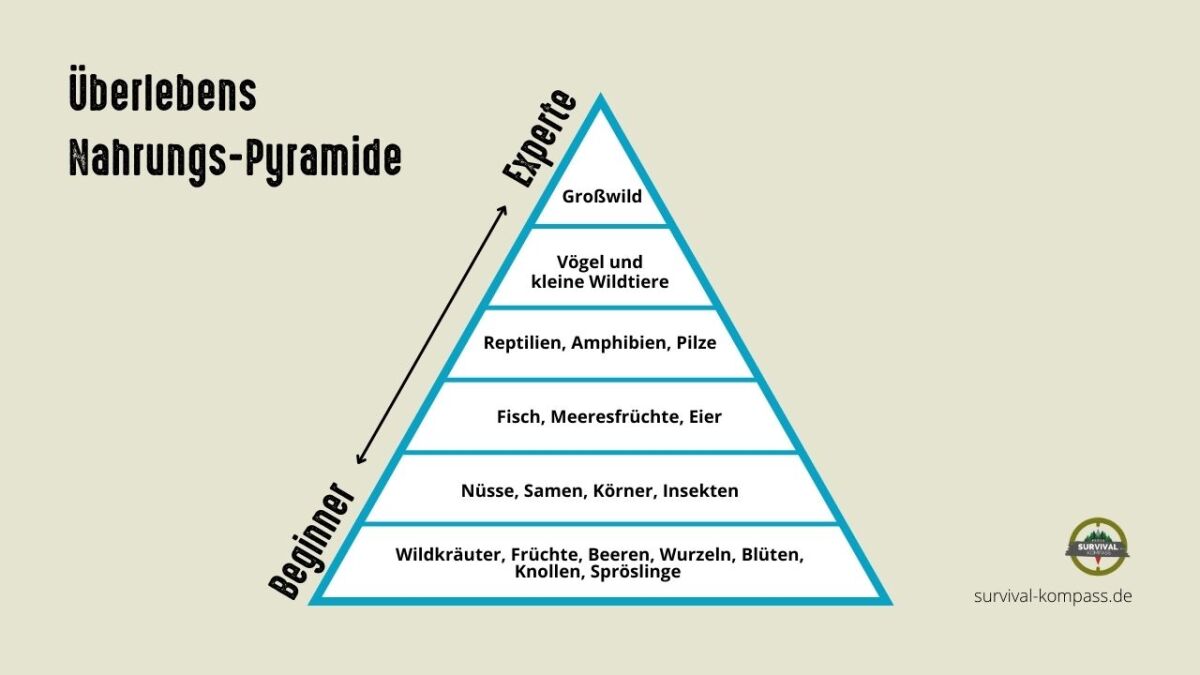
Especially for survivalists or someone is preparing for a crisis, it is not only essential to store food, but also to invest in their knowledge and make use of nature.
Micronutrients are vitamins and minerals and are involved in essential metabolic processes within the body and are therefore indispensable in the long run.
Fortunately, Mother Earth provides us with everything we need to meet our needs.
Wild herbs are here to help. Unlike conventional vegetables and fruits, they are true vitamin and nutrient bombs thanks to their originality.
Wild herbs are available all year round. You just need to know where to find them. However, in the depths of winter, you will need alternatives.
But be careful, normal grass is not an edible alternative and is not digestible by humans.
If you want to prepare for all eventualities and act confidently in a survival situation, you should definitely continue reading.
What micronutrients are essential?
You can already find many guides to different wild herbs and their fantastic properties here in the Survival Compass Magazine.
One of the most popular is my guide "Edible emergency rations: These plants can be found in the forest". You should certainly check it out later.
Therefore, I would like to specifically focus on the most important micronutrients and which plants can provide them for you:
Vitamin C
Vitamin C or ascorbic acid is involved in the production of various proteins such as collagen in the body. Furthermore, vitamin C has antioxidant properties and strengthens our immune system.
Vitamin C is probably the most well-known vitamin and can also be easily obtained through wild herbs. Many wild herbs contain large amounts of this substance.
Particularly high amounts can be found in the versatile nettle. I highly recommend my detailed guide on this true powerhouse plant.
Sorrel or great burnet have comparatively high amounts of vitamin C but are less frequently found. Ascorbic acid can be found in almost all wild herbs in smaller quantities.
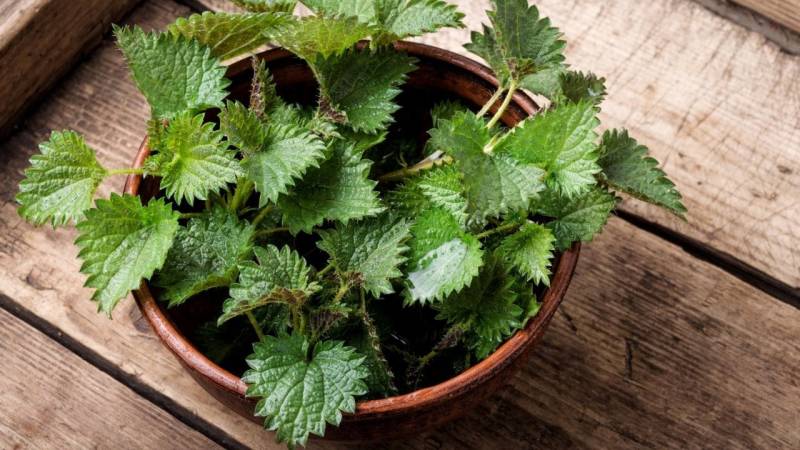
Vitamin A or Provitamin A
Vitamin A or provitamin A is necessary for several processes in the body. It is significantly involved in the process of vision as well as in the growth, function, and structure of skin and mucous membranes.
It also plays a crucial role in the nervous system and the formation of blood cells. Lastly, vitamin A also affects the immune system.
Once again, nettle is at the forefront. However, other plants such as ground elder, chickweed, and especially wild mallow have higher concentrations of provitamin A. Alternatively, garlic mustard can also be used - it just has less vitamin A.
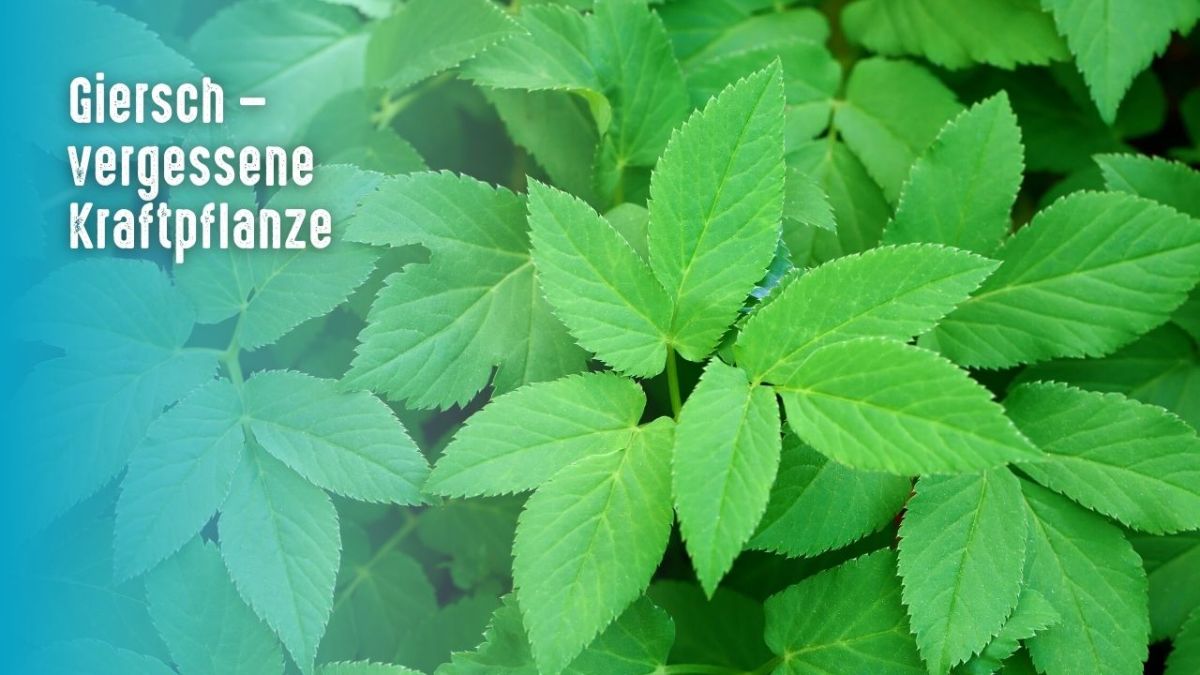
Vitamin B1
Vitamin B1 or Thiamine plays an important role in glucose metabolism and is therefore also responsible for energy production.
In addition to wild garlic and chickweed, comfrey has higher amounts of Vitamin B1.
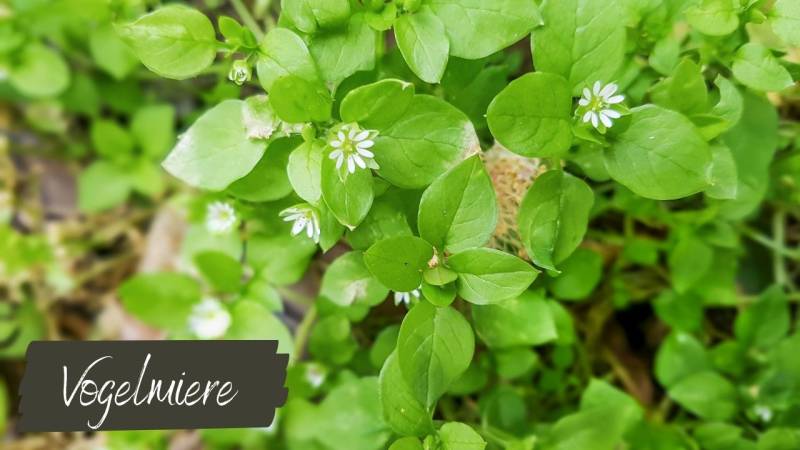
Vitamin B2
Vitamin B2 or Riboflavin is largely involved in our metabolism. The herbs mentioned for Vitamin B1 also apply here: wild garlic, chickweed, and comfrey.
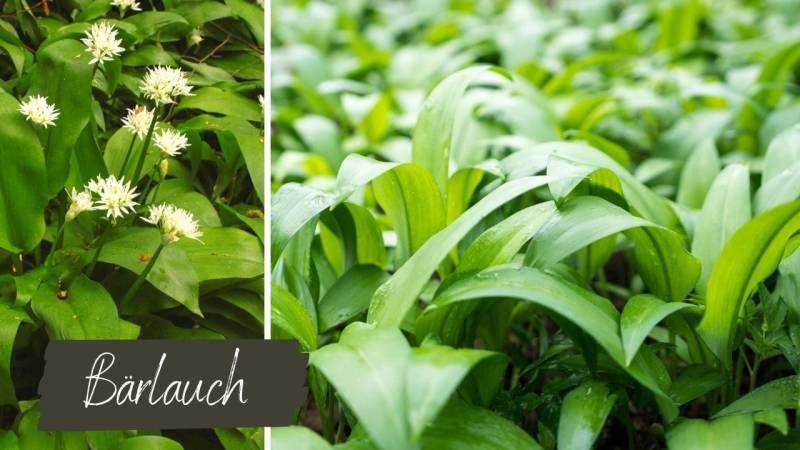
Vitamin B12
Vitamin B12 or Cobalamin is also involved in our metabolism. We need it for blood formation, and it also contributes to the function of our nervous system.
The assumption that Vitamin B12 only occurs in animal foods is probably not entirely correct. There is even a wild herb that is said to contain B12: comfrey. However, this is not yet scientifically proven, but many people swear by it. Here you will find more information on where Vitamin B12 is contained.
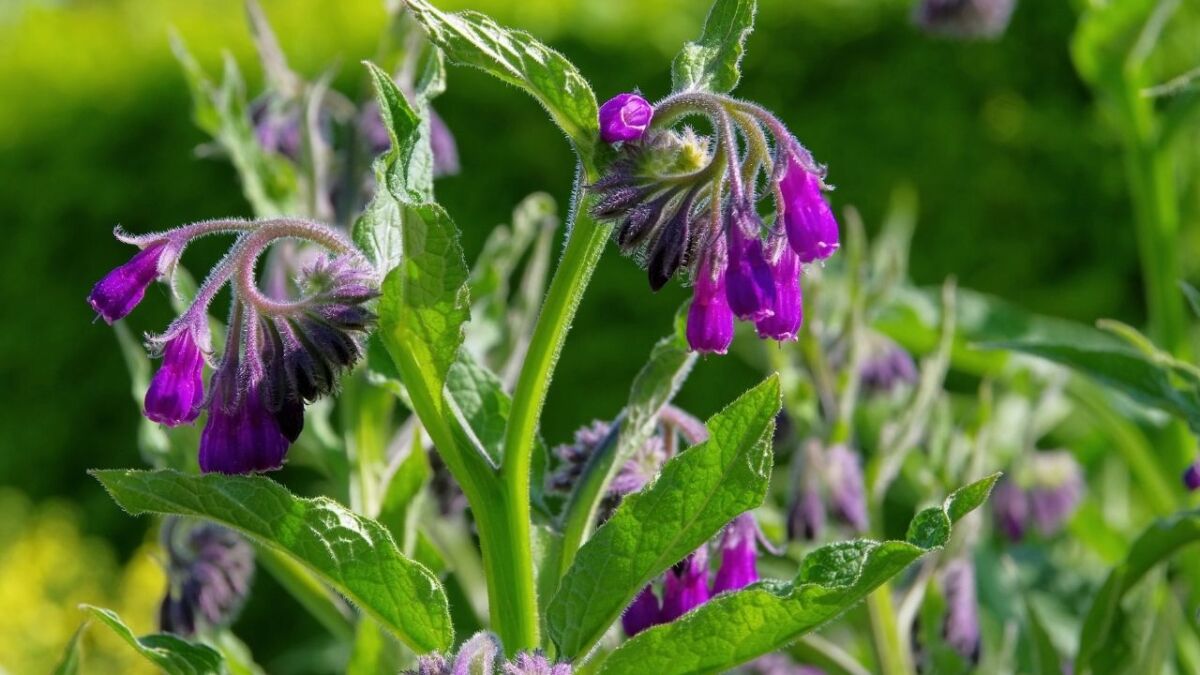
Magnesium
The mineral magnesium is essential in the body and is involved in many processes. It is part of about 300 enzyme reactions and contributes to a functioning immune system.
Magnesium also plays a role in muscles and nerve cells. Here, the substance stabilizes the resting potential and a deficiency can therefore lead from nervousness and restlessness to heart rhythm disturbances and muscle cramps.
So, how do we get this essential mineral in nature? Here, the stinging nettle is also a good point of contact. But the white goose foot or the daisy also offer the mineral.
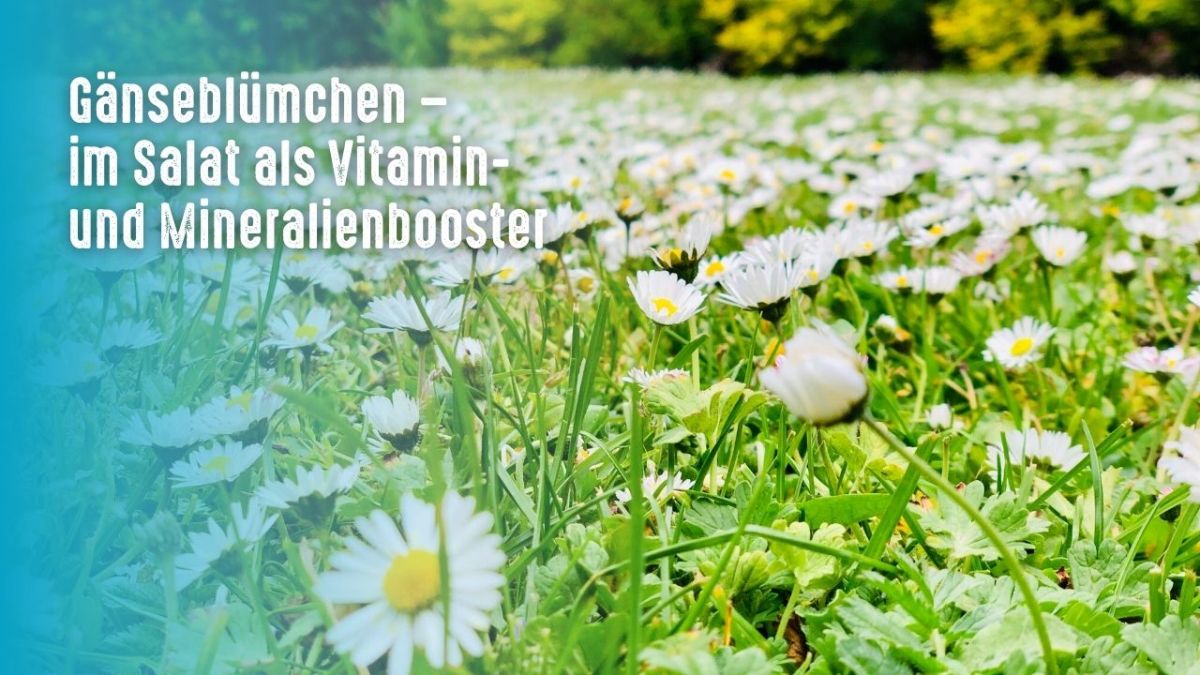
Iron
Iron is an important element in oxygen transport and blood formation. It is also involved in some metabolic processes. In children, iron even plays a central role in brain development. In addition to nettle, wild garlic and chickweed are good sources of iron.
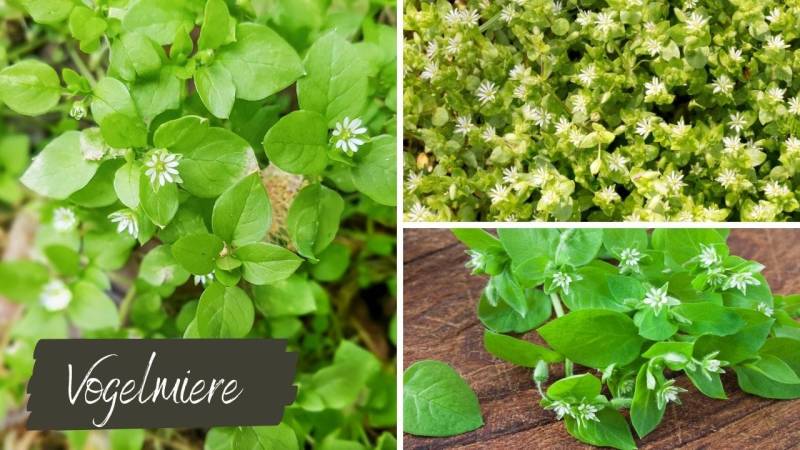
Calcium
99% of the calcium in our body is bound in teeth and bones. However, the mineral has many other functions in our organism.
Above all, we need the calcium influx in our muscle cells to trigger muscle contraction.
In addition to the bones, a calcium deficiency also affects our muscle function.
As so often, we can rely on nettle here as well. It has by far the highest calcium content. But the goose foot and chickweed are also reliable sources of calcium.
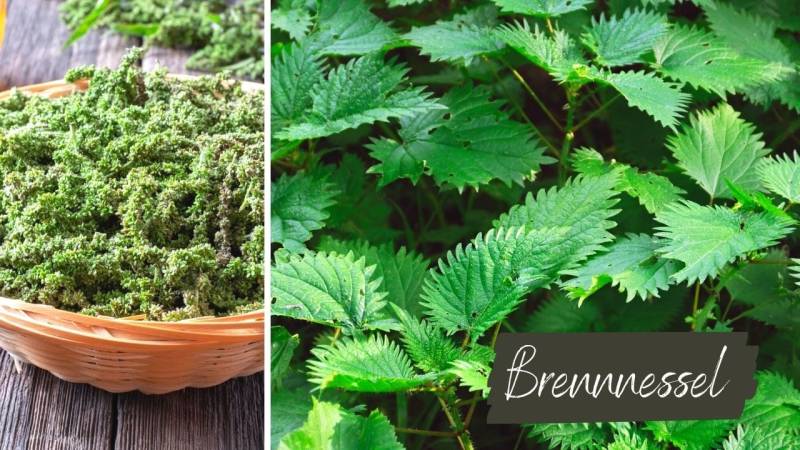
Potassium
Potassium is essential to many processes in every cell and is involved in carbohydrate metabolism and protein synthesis. This essential mineral can be found in many wild herbs, particularly in high concentrations in white goose foot, chickweed, and daisy.
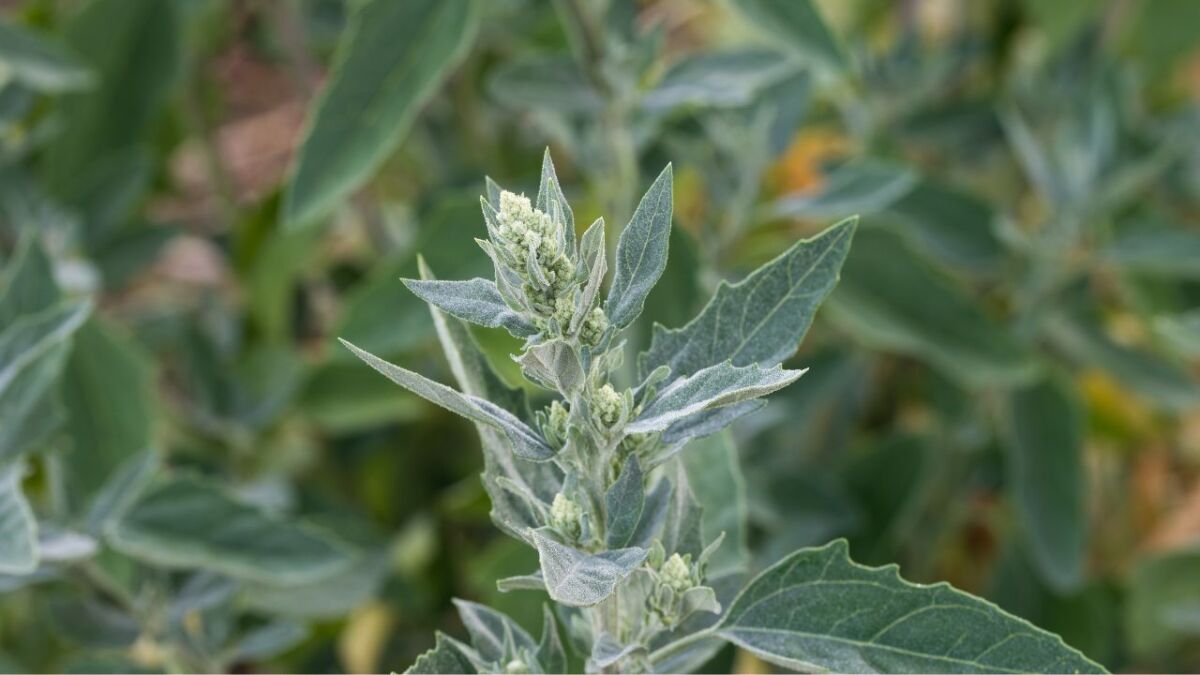
Comparison of Cultivated Plants and Wild Herbs
The cultivated vegetables we find in our supermarkets or grow ourselves have been bred in a specific direction.
Their high nutrient density is not their main focus, but rather mild taste and long shelf life.
While these properties have their place, we need to eat much more of them to meet our nutrient needs. Here is a black and white comparison of how wild herbs differ from our vegetables.
Wild Herb Micronutrient Table
| Cultivated Vegetables | Water [%] | Potassium [mg/100g] | Phosphorus [mg/100g] | Magnesium [mg/100g] | Calcium [mg/100g] | Iron [mg/100g] | Vitamin C [mg/100g] | Provitamin A [µg/100g] |
|---|---|---|---|---|---|---|---|---|
| Asparagus | 93.4 | 290 | 52 | 14 | 21 | 2.2 | 24 | 1900 |
| Broccoli (florets + stalk) | 90.7 | 300 | 66 | 21 | 47 | 0.7 | 89 | 850 |
| Brussels sprouts | 87.5 | 370 | 69 | 23 | 42 | 0.8 | 85 | 800 |
| Cauliflower (florets + stalk) | 92.1 | 290 | 44 | 15 | 22 | 0.5 | 48 | 20 |
| Celery | 94.5 | 260 | 24 | 11 | 40 | 0.5 | 3 | 700 |
| Chicory | 94.6 | 240 | 44 | 15 | 19 | 0.4 | 11 | 700 |
| Cucumber (with peel) | 96.0 | 150 | 20 | 10 | 16 | 0.2 | 2.8 | 30 |
| Eggplant | 92.0 | 230 | 20 | 14 | 9 | 0.3 | 2.2 | 12 |
| Lettuce (mixed varieties) | 94.9 | 280 | 36 | 13 | 33 | 1.3 | 40 | 3300 |
| Onion | 88.8 | 160 | 40 | 10 | 29 | 0.3 | 7 | 0 |
| Peppers (mixed colors) | 92.0 | 200 | 19 | 11 | 10 | 0.3 | 140 | 30 |
| Pumpkin | 93.0 | 220 | 24 | 12 | 19 | 0.2 | 9 | 5100 |
| Radicchio | 93.8 | 250 | 47 | 23 | 19 | 0.9 | 8 | 2700 |
| Radish (with peel) | 93.9 | 250 | 30 | 10 | 25 | 0.3 | 18 | 0 |
| Spinach | 91.4 | 370 | 50 | 22 | 99 | 3.5 | 28 | 4900 |
| Zucchini (with peel) | 94.8 | 250 | 30 | 14 | 16 | 0.4 | 17 | 100 |
Table Wild Vegetables and Micronutrients
| Cultural Vegetables | Water [%] | Potassium [mg/100g] | Phosphorus [mg/100g] | Magnesium [mg/100g] | Calcium [mg/100g] | Iron [mg/100g] | Vitamin C [mg/100g] | Provitamin A [µg/100g] |
|---|---|---|---|---|---|---|---|---|
| Cauliflower | 91.6 | 328 | 54 | 17 | 20 | 0.6 | 70 | 6 |
| Chicory | 94.4 | 192 | 26 | 13 | 26 | 0.7 | 10 | 215 |
| Chinese Cabbage | 95.4 | 202 | - | 11 | 40 | 0.6 | 36 | 13 |
| Endive | 94.3 | 346 | 54 | 10 | 54 | 1.4 | 10 | 190 |
| Lamb's Lettuce | 93.4 | 421 | 49 | 13 | 35 | 2.0 | 35 | 650 |
| Kale | 86.3 | 490 | 87 | 31 | 212 | 1.9 | 105 | 680 |
| Lettuce | 95.0 | 224 | 33 | 11 | 37 | 1.1 | 13 | 130 |
| Swiss Chard | 92.2 | 376 | 39 | - | 103 | 2.2 | 39 | 590 |
| Brussels Sprouts | 85.0 | 411 | 83 | 22 | 31 | 1.1 | 114 | 67 |
| Red Cabbage | 91.8 | 266 | 30 | 18 | 35 | 0.5 | 50 | 5 |
| Spinach | 91.6 | 633 | 55 | 58 | 126 | 4.1 | 52 | 700 |
| White Cabbage | 92.1 | 227 | 28 | 23 | 46 | 0.5 | 46 | 7 |
Conclusion: Independence through Knowledge
It is fundamentally advisable to always keep an eye on your micronutrients and ensure that your needs are met.
This allows your body to function smoothly, and you can face the challenges of the day with a strengthened immune system.
This becomes even more important in a survival situation or a disaster scenario. While you can store root vegetables, canned and dried food, fresh vegetables are missing.
Vegetables and herbs contain many micronutrients that you could be missing in the long run.
With the knowledge that is presented here and can also be found in many wild herb books, you can meet your nutrient needs with the help of nature.
If you intend to take it a step further, then create your own self-sustaining garden or take care of your own herbal pharmacy.
This will make you even better prepared for any eventuality, and you can provide your family and yourself with a balanced diet despite extreme situations.

Sources for the guide
https://uebungenzuhause.de/wildkraeuter-naehrstoffreiches-unkraut/
https://www.slowfood.de/w/files/karlsruhe/info_wildkraeuter_sf-ka_160625.pdf
https://unkraut-liebe.de/ernaehrung/naehrstoffe-wildkraeuter
https://de.wikipedia.org/wiki/Riboflavin
https://vollwert-blog.de/10-gruende-wildkraeuter-liebe/
https://de.wikipedia.org/wiki/Magnesium
https://de.wikipedia.org/wiki/Eisen-Stoffwechsel
https://www.gesundheit.gv.at/leben/ernaehrung/vitamine-mineralstoffe/spurenelemente/eisen.html
Wildgemüse (Nr. 1182), herausgegeben von aid–Infodienst, Bonn, 1982 (https://www.ble-medienservice.de/files/downloads/leseprobe_1559_2009-2429002.pdf)

Author of the guide
Martin Gebhardt
Hey, I'm Martin. On my blog, you will learn the basics and numerous details about living in the wild. I think survival, bushcraft and the good life in nature are the keys to happiness. Find me here on Instagram or on YouTube. You can find more about my mission on the About Me page.
Was this guide helpful?
10 people found this guide helpful.
5.00 out of 5 points (10 Ratings)
Comments (0)
This post may contain affiliate links. So if you click on the links and make a purchase, I will receive a small commission at no additional cost to you. Click here, to learn more about it.



